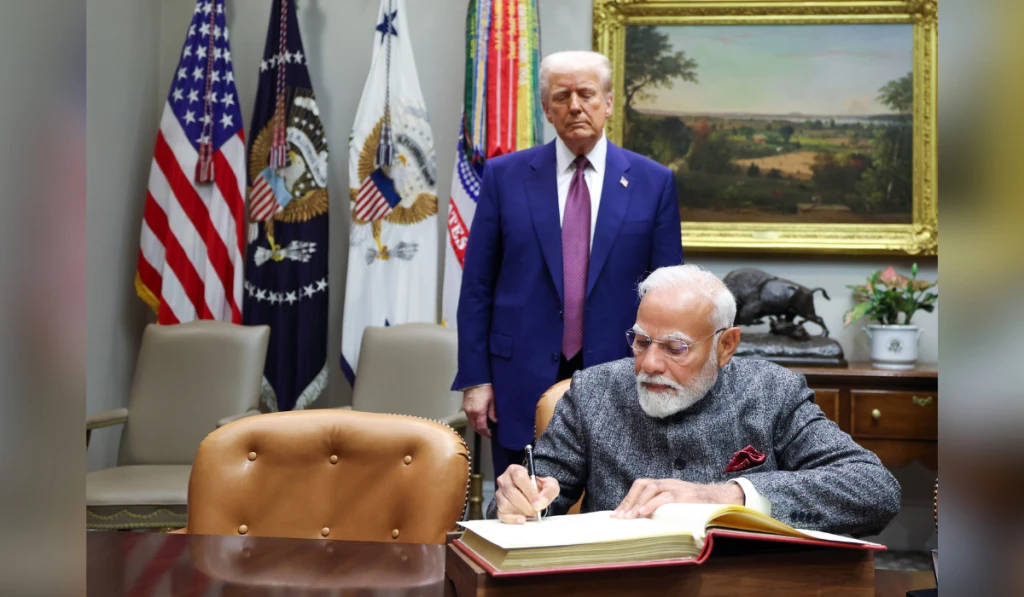New Delhi: US President Donald Trump’s announcement of steep tariffs on India, his criticism of the Indian economy as
and his publicovertures towards Pakistan have placed Prime Minister Narendra Modi, more than India as a nation, in a uniquely difficult spot.
While the impact on India as a country is tangible, it is a moment of political reckoning for Modi, who has been under pressure since the 2024 Lok Sabha elections when the BJP lost its majority in the house.
Here are the reasons it places Modi in a tough spot.
Destroys Modi’s domestic image of a global statesman
Modi has painstakingly cultivated an image of himself domestically as a top global leader exhibiting close personal friendships with the world’s most influential heads of state, particularly in the US.
Trump’s public insults and punitive tariffs undermine this persona, making Modi appear ineffective or even powerless in protecting Indian interests and standing on the world stage.
Under pressure from the US, he has already succumbed to China, even though Beijing continues to pile on pressure and refuses to make any concessions. This severely erodes Modi’s political brand at home, where he and his party have used images from his foreign trips to project influence domestically.
Political ammunition for domestic opposition
With Trump – the first for an American president – openly criticising the Indian economy and labelling it “dead”, opposition parties such as the Congress have to portray Modi’s economic approach and foreign outreach as failures. They argue that Modi’s support of Trump during previous years has unravelled, leaving India diplomatically isolated and economically vulnerable.
Modi’s in his Lok Sabha speech, despite an open challenge by leader of opposition Rahul Gandhi, has shown him as weak and scared of standing up to the US president. This provides ammunition for the opposition parties to politically target Modi when he is already being challenged by the Rashtriya Swayamsevak Sangh on the issue of the election of the new BJP president.
Setbacks undermine Modi’s central arguments
The new US tariffs threaten to erode the competitiveness of Indian exports, damage investor sentiment and threaten to bury Modi’s faltering attempts to get global manufacturing to India.
Key labour-intensive sectors such as jewellery, textiles and certain electronics face certain job losses. These outcomes create immediate economic pain and threaten Modi’s narrative of making India an economic powerhouse as the “fourth-largest economy in the world”.
If the US also follows through on penalties related to India’s Russia policy, the fallout could be even more severe. Energy prices could rise and India’s fiscal deficit could increase, putting further pressure on the budget and bringing greater distress to the people.
Hyphenation with Pakistan sours nationalist dreams
Trump’s statements and overtures that club India with Pakistan, including praising a new US-Pakistan energy deal and openly patronising Islamabad, are a direct affront to Modi’s narrative of India as a regional counterweight to both Pakistan and China.
The perception that the US is tilting toward Pakistan, or using India-Pakistan tensions for leverage, is particularly damaging to Modi’s core nationalist constituency, which takes pride in a strong, singular global standing for India. It believed that India cannot be equated with its neighbour or seen as needing US mediation to end the conflict.
Modi’s inability to secure even this basic gain of the UPA era damages his “desh nahi jhukne doonga” brand among his core Hindutva supporters.
Loss of bargaining leverage hurts economy
Modi’s strategy had relied on fostering goodwill and leveraging the India-US relationship for favourable trade agreements and strategic cooperation. Trump’s abrupt imposition of tariffs, at rates higher than those faced by competing Asian economies, signals that Washington is willing to use harsh tactics, regardless of personal or diplomatic ties. This despite Modi rushing to meet Trump after his re-election early this year.
New Delhi is now left scrambling for a response, with very limited leverage, and must consider politically costly concessions or risk a further downturn in exports and economic growth.
After 11 years of being in power, Modi can’t shift the blame on anyone else and will be held accountable for the severe economic downturn in the public eye.
In sum, Trump’s actions and rhetoric hit directly at pillars propping Modi’s domestic political strength and standing, in ways that are both visible and hard to quickly repair. The impact on India will be managed, but it is Modi, as a political leader and as an electoral brand, who now faces the greatest challenge in his eleven years in office.
